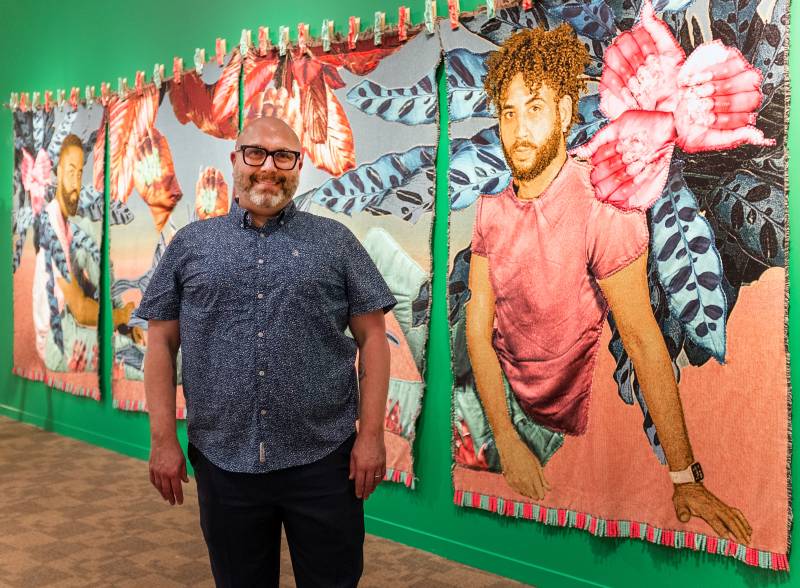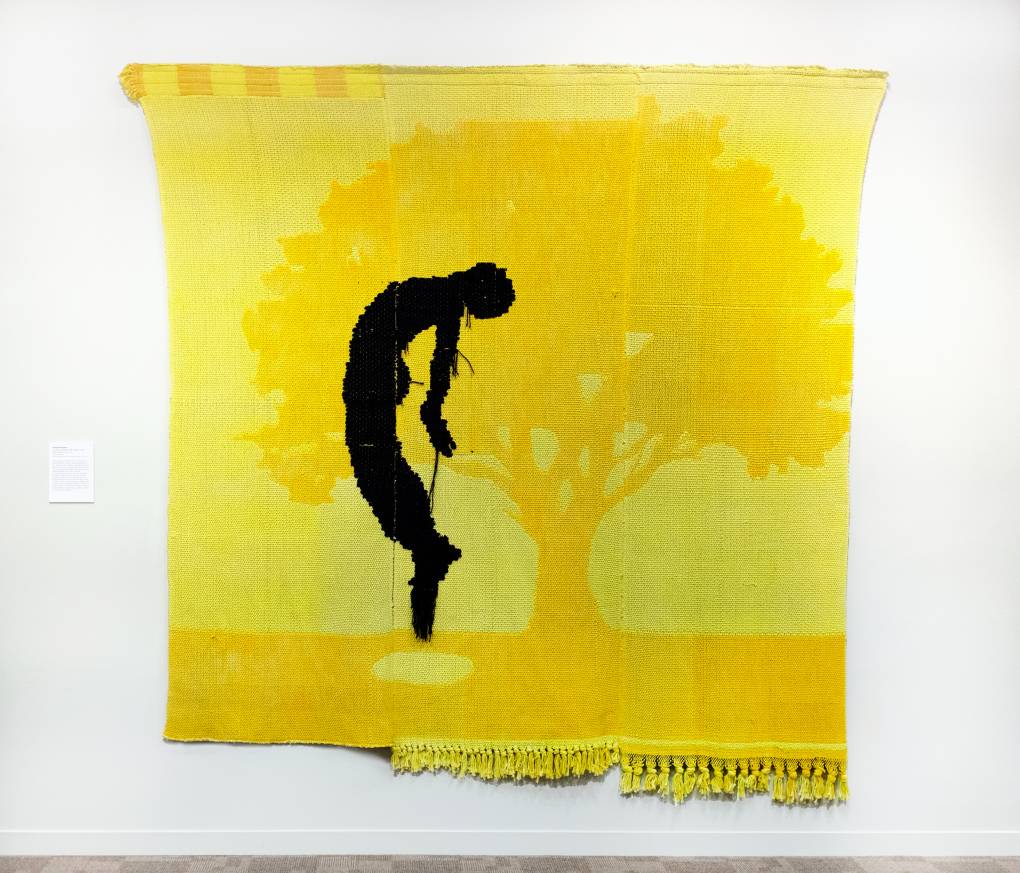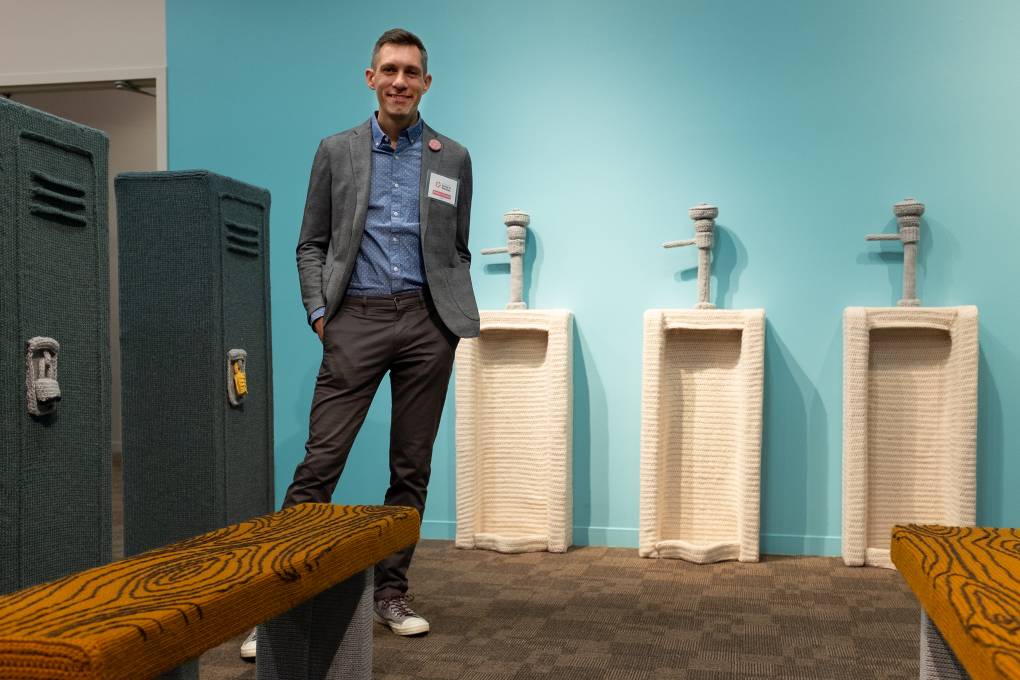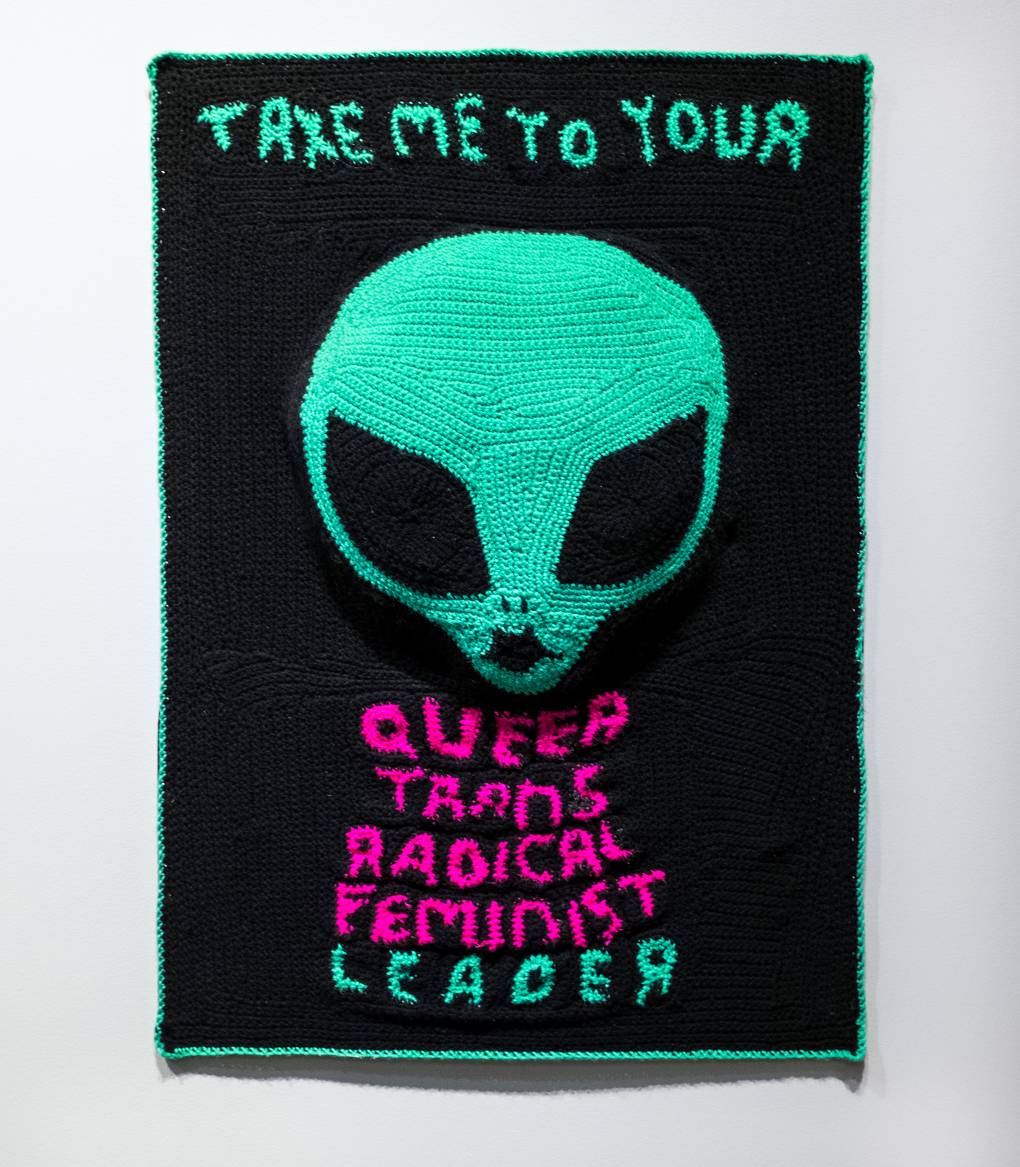Independent curator John Chaich’s fascination with textile arts traces back to the 1990s, when he witnessed the AIDS memorial quilt at the Washington Monument. Chaich remembers thinking it was a magnificent and expansive narrative tribute — something crafted by countless anonymous hands, honoring numerous individuals.
Not only did it shape his sense of identity and deepen his understanding of the impact of HIV and AIDS on the gay community, it also left him profoundly moved. That pivotal moment helped ignite Chaich’s passion for textile arts and the LGBTQ artists working in this medium.
Chaich’s visionary exhibition, Queer Threads, debuted in 2014 at the Leslie Lohman Museum in New York City, and has since traveled to Baltimore and Boston. Now, it showcases its fourth iteration at the San Jose Museum of Quilts and Textiles. The exhibition, which opened May 12, features 38 works by 37 artists primarily from the West Coast, with a diverse range of artistic techniques and narratives.
Traditional fiber textile methods like embroidery and weaving intersect with queer narratives, resulting in pieces where every stitch tells a story. The exhibition also embraces a “queer as a verb” approach, incorporating mixed media elements such as painting with felt, drawing with yarn, fabric collages and fabric sculptures. The choice of material in each artwork is intentionally intertwined with the meaning, adding layers of symbolism.
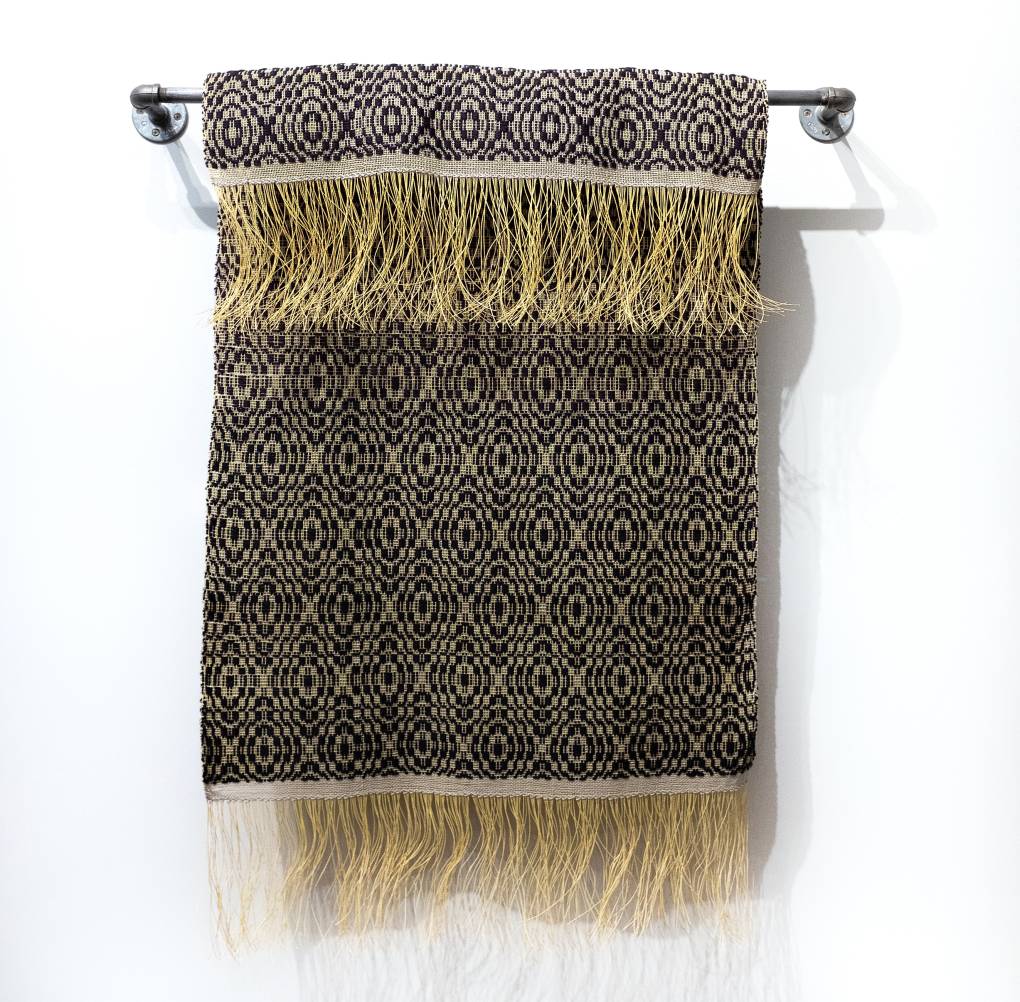
This deliberate intertwining of material and message permeates Overshot Safety Blanket, by Erika Diamond. Created in response to the Pulse nightclub massacre, the piece comments powerfully on queer visibility and safety with its use of Kevlar, the material used for bulletproof vests.
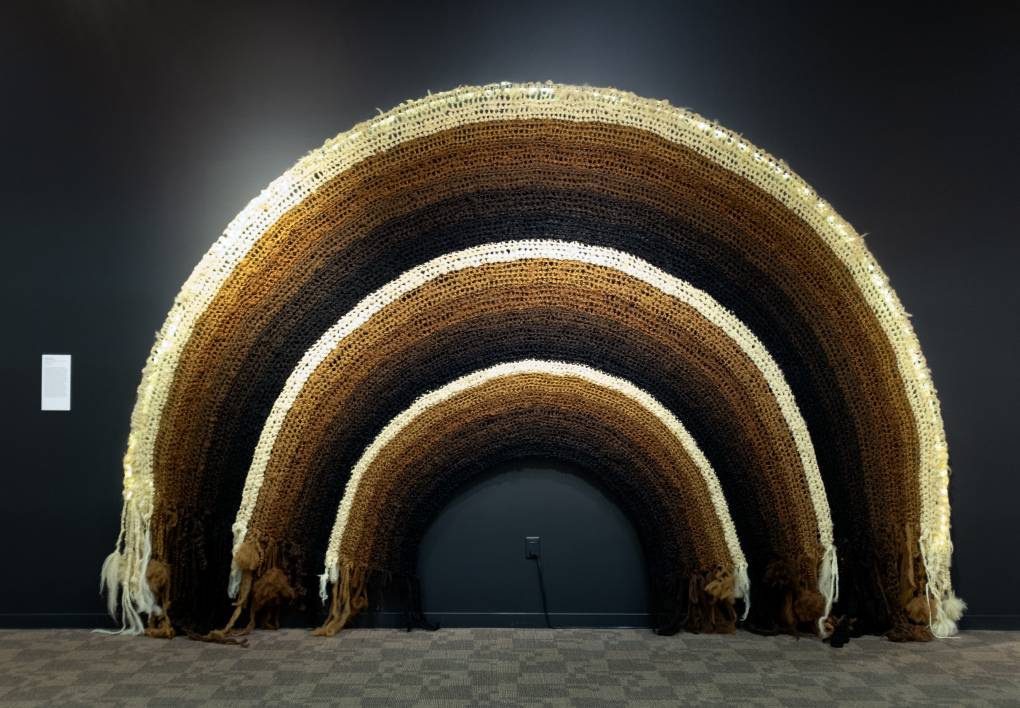
Oakland artist Angela Hennessy’s colossal crocheted work, titled Black Rainbow, incorporates hair, traditionally associated with mourning, as a signifier of cultural and personal identity, further enhanced by the intimate process of crochet.
